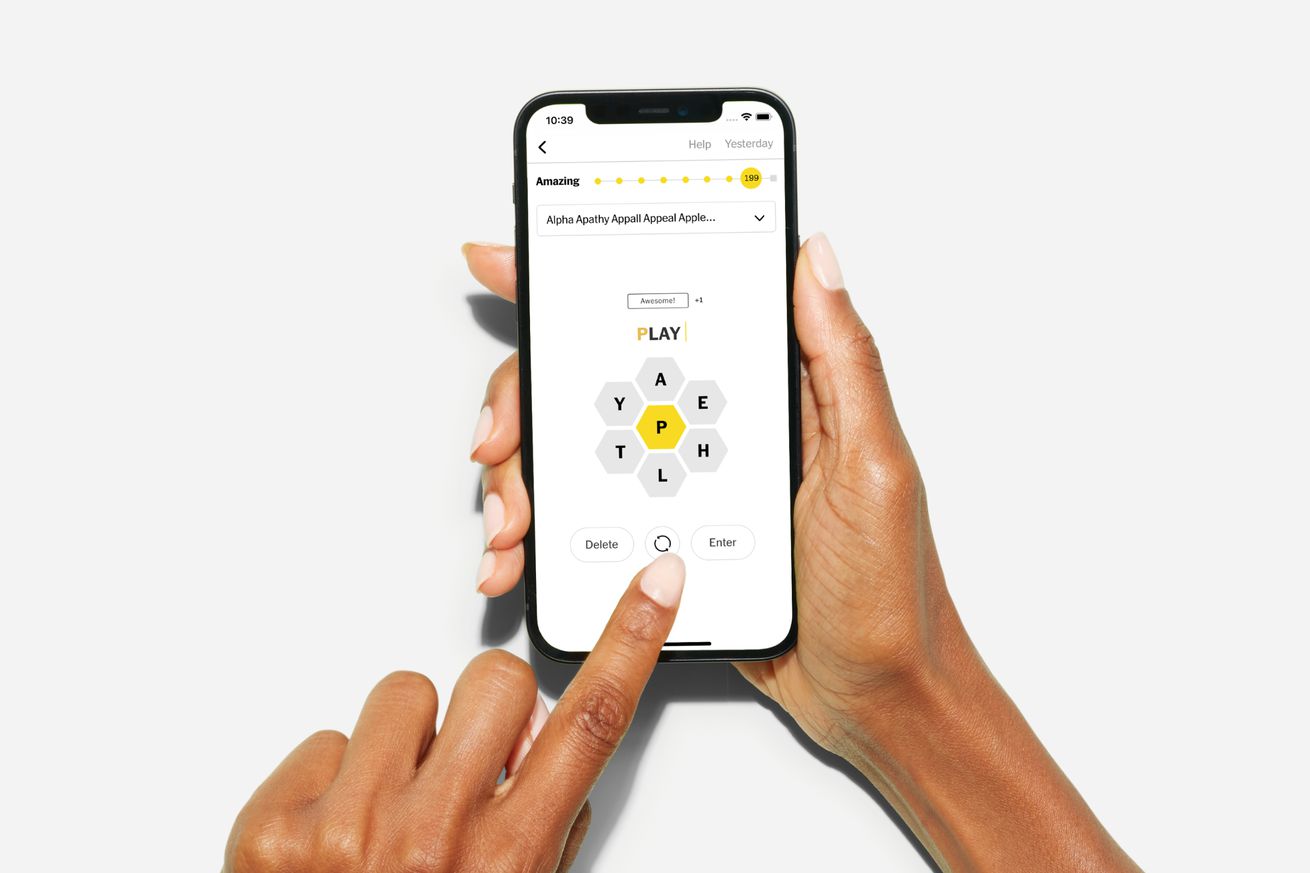
The New York Times’ push into games meant a major change for its crosswords app
In March, The New York Times made a small but important change to its crosswords app: it dropped the “Crosswords” part of the name in favor of “Games.” It’s a small but important shift that acknowledges how the app has grown from a place to play the crossword into a hub for many of the NYT’s growing library of games.
In addition to the daily crossword, the app now lets you access mini crosswords (“the Mini”), Wordle, a word-spelling game called Spelling Bee, and, as part of some recent updates, sudoku and a visual puzzle game called Tiles. On Tuesday, people who subscribe to the NYT’s Games or All-Access subscriptions will start to get an extra perk: the NYT is rolling out access to the previous two weeks of Spelling Bee puzzles so that subscribers have an archive to chip away at.
“The time just seemed right”
Some may have noticed that the web version of the publication’s games collection switched to the Games branding about three years ago. But with the app, “we sort of held out,” Jonathan Knight, head of games at The New York Times, says in an interview with The Verge. The original crosswords app, which launched in 2009 on iOS, ranked highly on the App Store for the word “crossword.” “We were cautious about messing with that very healthy funnel,” Knight says. The team took a slow approach to bringing more games into the app, and last month, “the time just seemed right” to make the switch from crossword in the name to games.
I started dabbling with the app a few weeks ago when looking for a good place to play sudoku. (By then, it had already switched over to become NYT Games.) It’s since become one of the few apps I keep on my iPhone’s homescreen. I don’t have any sort of NYT subscription, so I don’t have access to all of the features in the app — I can’t play the daily crossword, for example — but I’ve been able to get my sudoku fix, spell some words with Spelling Bee, and try to solve some Wordle puzzles.
Wordle, unsurprisingly, has become a central pillar of the NYT’s games offerings. The NYT acquired it in January 2022 for an undisclosed seven-figure sum soon after the game became a viral hit, and it’s become the NYT’s most-played game “by far,” with “tens of millions” of people playing Wordle every week, Knight says. The next-most popular game is what Knight calls “a tight race” between the Mini and Spelling Bee, “which enjoy about sort of equal size audiences.” (Spelling Bee is “the most played game among our subscribers,” according to Knight.)
I asked Knight how he thinks about the mix of what’s free and what’s only offered with a subscription. “We think there’s a real role for free games that introduce users to our more premium games,” Knight says. He gives the example of how Wordle, which is free, promotes Spelling Bee, which requires a subscription after you spell enough words. “Wordle plays that really important role, and I think we’ll always have games that play that role of giving you a taste.”
“We don’t need you to be in our app 24/7”
Knight’s goal is for the NYT Games section to be seen as “the premier subscription destination for digital puzzles.” To Knight, that means things like clean designs, not nickel-and-diming players, and offering human-crafted puzzles every day. “It’s time well spent,” he says. “We don’t need you to be in our app 24/7. We want you to solve great, human-made puzzles and then come back the next day.”
Hearing Knight’s explanation for the team’s philosophy for its games, I think they’re on to something. I’ve been wondering why the NYT Games app, of all of the other places to play mobile games, is the one that keeps me coming back. I loved mobile gaming in the early days of the iPhone, but I’ve avoided many recent games that feel designed to prey on my worst impulses, and I largely can’t keep up with the many releases on Netflix and Apple Arcade.
But in the NYT Games app, with just a minute or two, I can complete the Mini or spell a few words in Spelling Bee. If I have a luxurious five minutes, I’ll race to finish the easy sudoku. Sometimes, I zip over to Spelling Bee to peck at a few letters. The puzzles feel fair, and it’s always an accomplishment when I solve them.
Yes, the app has a fair number of prompts to subscribe. But they’re usually easy to ignore. And even so, they’re actually kind of working. I’m considering trying out full-fledged crosswords, but those are only available for paying subscribers. That tantalizing puzzle carrot might be enough to get me to subscribe — but while I’m thinking about it, I’ll try another sudoku instead.

